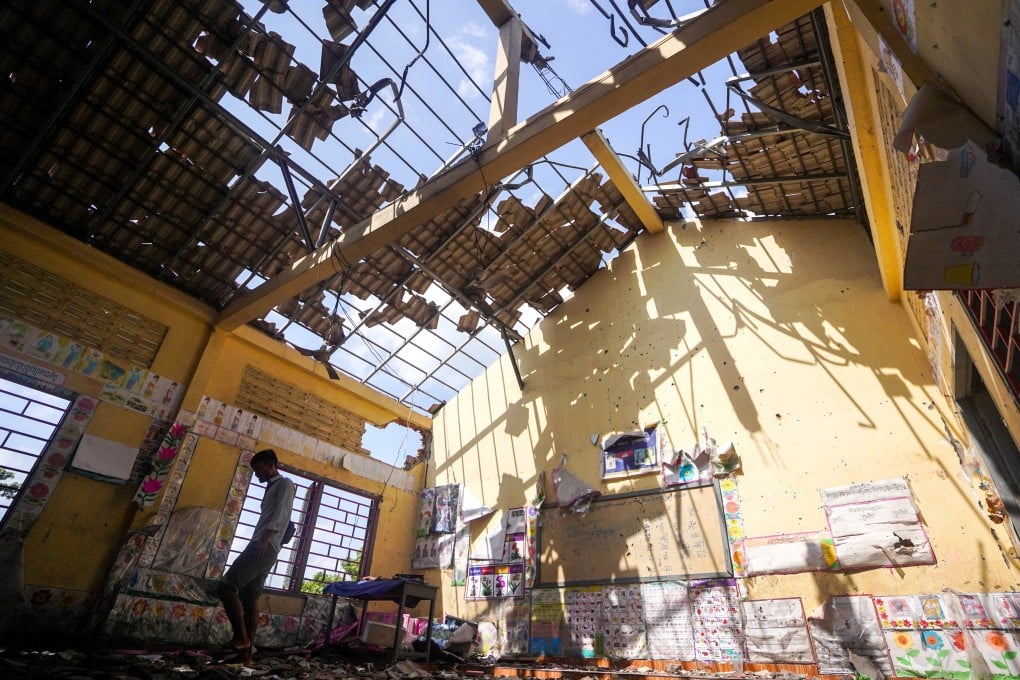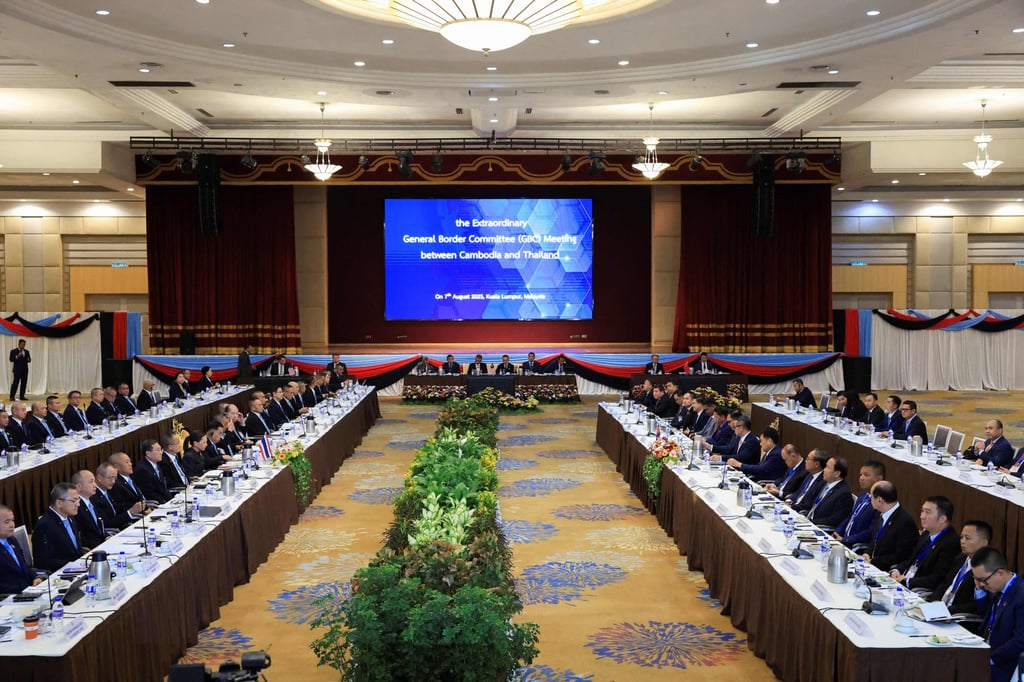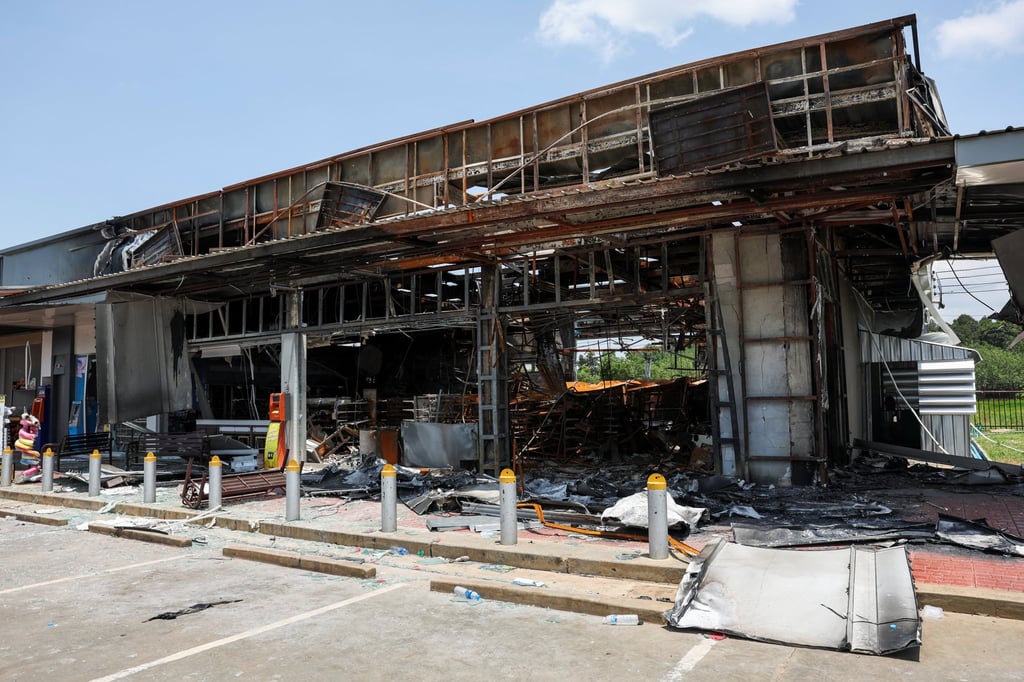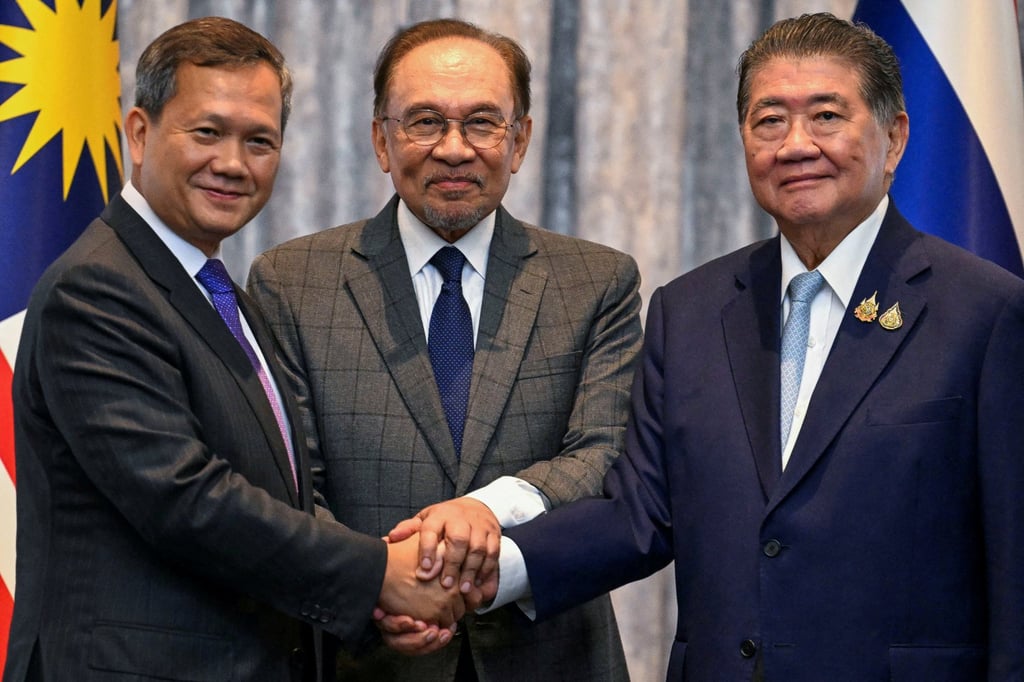Observers say while Asean’s intervention may help cease hostilities for now, sustained engagement is needed to resolve tensions long term

The countries hashed out the terms of their ceasefire, including a joint pledge to continue a freeze on border troop movements and civilian attacks, as well as the use of all types of weapons. The conflict has claimed the lives of at least 43 people and displaced more than 300,000 on either side.
Abdul Rahman Yaacob, a research fellow at the Lowy Institute’s Southeast Asia programme, told This Week in Asia that Asean faced a tall hurdle in keeping the peace “because of the deep mistrust between Cambodia and Thailand, and the fact they have different preferences when it comes to how best to resolve the border disputes”.
“Thailand prefers to resolve the disputes at the bilateral level, while the Cambodians prefer to utilise international legal system and involving the international community. This itself will be a challenge for the two parties to resolve their disputes in the long run,” Rahman warned.
Thai forces continue to hold 18 Cambodian soldiers in captivity hours after the ceasefire came into effect, provoking uncertainty around the terms of the truce. On August 8, the Thai Royal Army insisted that its detention of the soldiers followed international law amid accusations of illegal detention by the Cambodian side.
Purawich Watanasukh, a lecturer of political science at Thammasat University, shared similar views.
“Despite the ceasefire, the level of distrust between the two countries remains high, and rebuilding mutual trust will not be easy in the short term. This deep-seated mistrust is the result of tensions cultivated over many years,” Purawich told This Week in Asia, adding that achieving lasting peace along the border required “sustained bilateral engagement”.

Stopgap measure?
Observers recognise Asean’s role in helping bring the clashing countries to the negotiating table and its commitment to peacekeeping efforts as viable in preventing further hostilities in the short term.
“In the short term, the deployment of Asean observers to inspect border areas between Thailand and Cambodia, and to assist in peacekeeping efforts, appears viable for maintaining stability,” said Deryk Baladjay, a lecturer at the Department of International Studies at the De La Salle University and a consultant for the think tank Amador Research Services.
Yaacob called Asean’s involvement in peacekeeping an “optimal approach” given the lack of trust between the countries.
The observers “would provide a form of legitimacy to the ceasefire, and the environment for the Thais and Cambodians to negotiate for a long-term solution to their border disputes”, and would help deter hostile actors “from attempting to undermine the ceasefire”, he added.
However, Chhay Lim, the deputy director of the Centre for Southeast Asian Studies at the Royal University of Phnom Penh, said Asean’s role was more of “an immediate solution to let both sides stop fighting as the death toll keeps increasing”.
The cause of the conflict, dating back to the French colonial period, was “more complex and far beyond Asean’s ability to solve” in terms of achieving long-term peace, Lim said, noting that this was the reason Cambodia did not seek Asean’s involvement during the border skirmish against Thailand, which left one Cambodian soldier dead.

While the Asean observers would help “de-escalate the conflict and ease tensions” for now, “sustainable peace will depend on Thailand-Cambodia relations”, Purawich said. “Ultimately, these two countries must work together to maintain stability and mutual trust.”
“With both Cambodia and Thailand now facing high tariffs, the question remains: can tariffs resolve a territorial conflict without tackling its root causes?” Rahman said, adding that the method only addressed “symptoms”.
Vu Lam, a policy analyst and Asean observer, said America’s tactic was a “risky move” and introduced external coercion, making the ceasefire even more unpredictable in the longer term.
Lim however acknowledged that Trump’s threats to cancel trade talks were what pushed both countries into discussions, particularly in securing Thailand’s commitment to consider a ceasefire, therefore paving the way for Asean to step in as mediator.
“I suspect that without Donald Trump stepping in, Asean would not really have this weight to push Bangkok to the negotiation table,” he said.

“Anwar’s leadership has been instrumental in bringing both parties to the table [...] Anwar’s approach demonstrates an effort to make Asean relevant and to give it a more meaningful role in regional security through active and committed leadership,” he said, adding that the ceasefire “fosters trust among Asean members’ leaders”.
With Asean now more involved in peacekeeping efforts, analysts say the bloc needs to determine the degree to which long-simmering issues among member states are central to its collective agenda.
“The bloc must demonstrate not only unity but also the capacity to act promptly and assertively, as political divisions remain an existential fault line for Asean [...] Sustained support from the broader Asean membership is essential to ensure that the peace process does not fracture into factionalism,” Baladjay told This Week in Asia.
Purawich warned that domestic political uncertainty could further feed into the inability of Thailand and Cambodia to secure long-term peace.
“The combination of political uncertainty and entrenched distrust will make maintaining the truce and securing long-term peace along the border challenging,” he said.
Sam Beltran is a journalist based in Manila who has written for publications in the Philippines and around Asia. Her stories explore food, lifestyle scenes, popular trends, and sub-cultures as

No comments:
Post a Comment